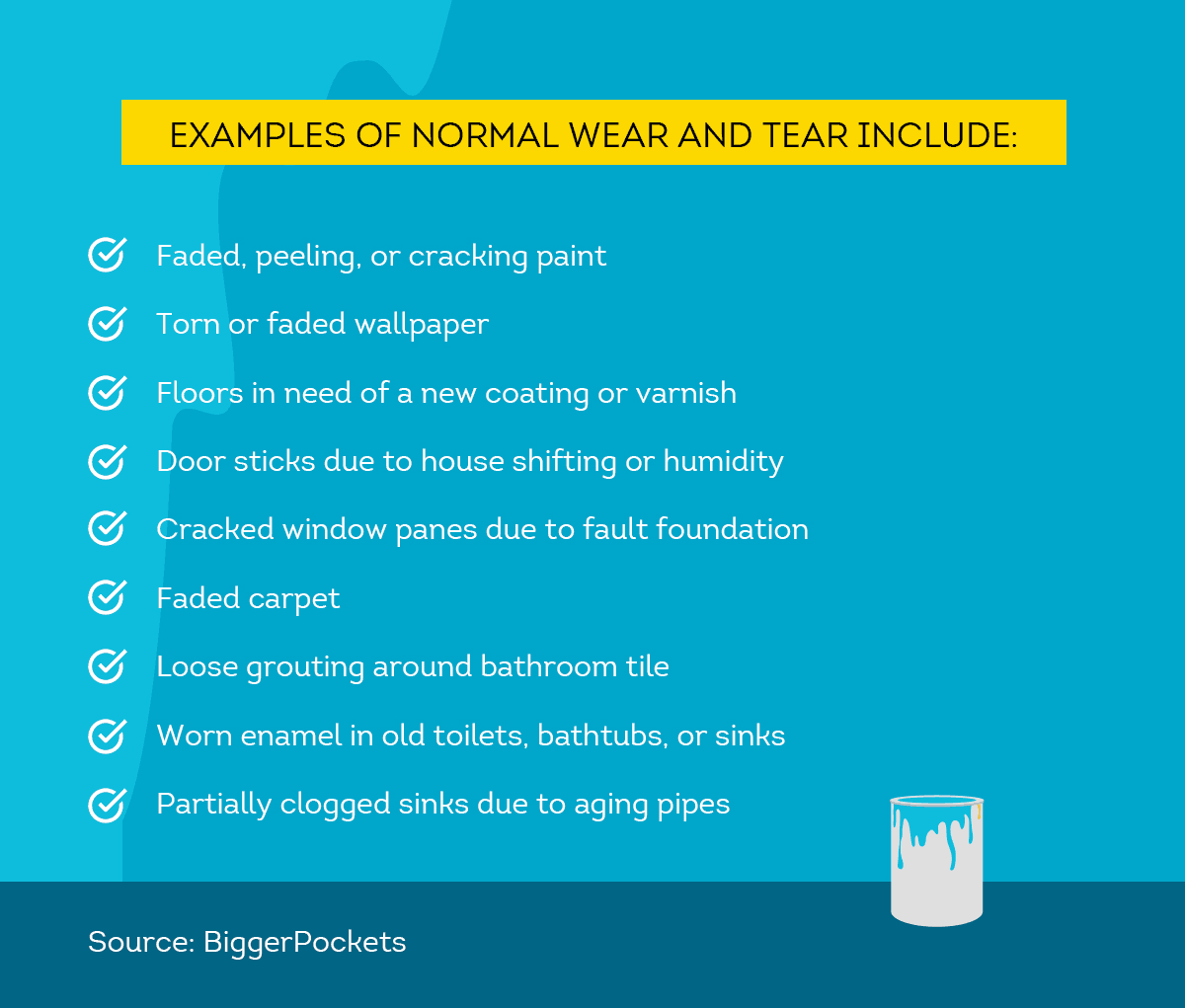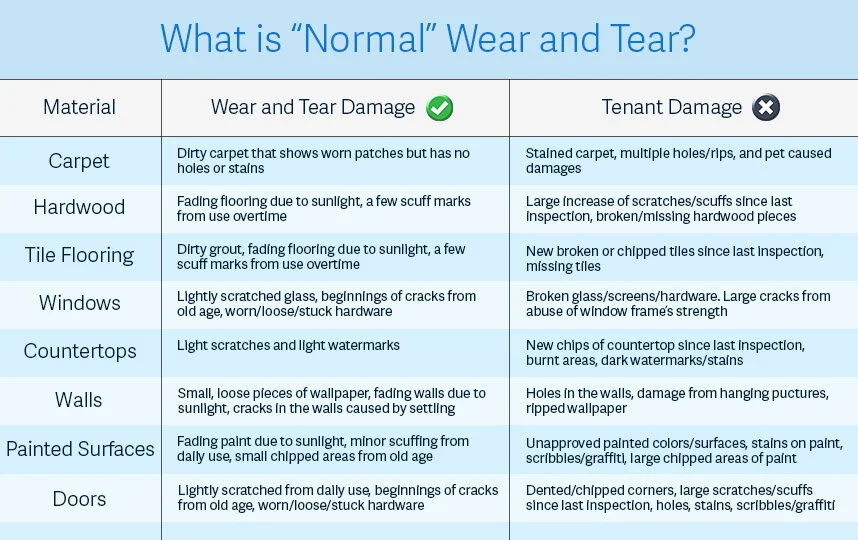Normal Wear & Tear v. Damage
What’s the difference?
Security deposits can be used to repair damage for which a tenant is responsible, but can not be applied to normal wear & tear. So what’s the difference?
This term used in lease contracts covers all damage that occurs naturally in a rental property due to aging. This is considered normal depreciation of many years of use or nature’s erosion to the doors, carpet, appliances, walls, etc. Normal Wear/Tear means that deterioration which occurs, based upon the use for which the rental unit is intended, without negligence, carelessness, accident or abuse of the premises or equipment or chattels by the tenant or members of their household, or their invitees or guests.
What “wear and tear” is not, is the neglect or abuse of the property, which would fall under damages that the security deposit covers. The comparison list above is designed to give tenants some examples (not an exhaustive list) of normal residential use vs. irresponsible, intentional or unintentional actions that cause damage to a landlord’s property.
Courts have also ruled that the length of time a tenant has occupied a property must also be taken into consideration when assessing damages in relation to security deposit deductions. Naturally, the longer a tenant has resided in the property, the more allowance must be given for “wear/tear” over damage.
How to Determine What’s Reasonable
If you’re in doubt about if the damage would qualify as wear and tear, ask yourself any of these questions below. Note that not all wear and tear will qualify for all these questions; Ex. old deteriorated floors wouldn’t qualify as a small section repair (#3) but would qualify for the first two questions (#1 and #2).
1. How long has it been since the last installation? Is it a reasonable time for a replacement or perhaps has a replacement been overdue?
2. Is the deterioration an appropriate fix for the situation or is the damage too substantial to happen so suddenly? (Few small scratches vs large cracks, scuffed items compared to age of installation, dirt build up vs large stains, loose/faded walls vs massive tears or obvious color changes)
3. Can a new part repair/rejuvenate the potential wear and tear, or can you replace a small section instead of installing a full replacement?

